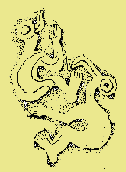
Closing the Triangle: A Quest for Rapa Nui

Polynesian Voyaging Society
Our Sacred Earth
The Hawaiian Islands began rising from the ocean floor more than 70 million years ago. Isolated in the center of the Pacific Ocean, these high volcanic islands and the plants and animals that inhabited them evolved slowly over millions of years, into unique new species and complex ecosystems. From its origins, Hawai'i was unlike any other place on Earth.
Nearly 2,000 years ago the Polynesians, a proud, seafaring people who were the greatest ocean explorers of their time, discovered this string of untouched islands abundant with natural resources. Large double-hulled voyaging canoes arrived from Nuku Hiva and Tahiti, and the new islands became part of an expanding nation of Polynesian people whose descendants would someday be known as Hawaiians. In this rich ecological setting the people and culture flourished. The Hawaiians engineered complex, sophisticated irrigation systems, agricultural terraces, and fishponds. They learned to care for the land and sea, and through the careful management of their natural resources, they were able to sustain a large, healthy population.
With the arrival of Western man in the 18th and 19th century, life changed dramatically for the Hawaiian people in ways they were unprepared for, and the consequences of this change can still be felt today. From the West came new social and economic values, devastating diseases, and the belief that Western ways were far superior to those of their ancestors. Land, long cared for as sacred, life-giving entities, became a commodity bought and sold for profit.
During this same period, traditional practices that promoted caring for the land and sea were abandoned or neglected; the health of the land and sea, along with the health of the Hawaiian people, has suffered. Native ecosystems have been damaged, and some species have been lost forever; others are in danger of being lost. Many coastal areas have been overfished and some deep-sea bottom fisheries are in decline. Meanwhile, population, consumption, and waste products continue to increase, placing a strain on limited space and resources, such as freshwater in our aquifers, some of which will reach maximum sustainable yield early in the next century.
In 1990, we started a project to build a voyaging canoe called Hawai'iloa out of native materials. We went to our koa forests to find two trees for the hulls and discovered that in the last 80 to 100 years, 90% of our koa trees have been cut down. The ecosystems which once supported this healthy forest are in trouble. We could not find a single koa tree big enough and healthy enough to build one hull of a canoe. Our elders told us, you know what the answers are and it's very simple. To deal with the abuse you need to renew it. We started a tree planting program with Kamehameha Schools, and now we've now planted over 12,000 koa seedlings, so that in 100 years, the next two-four generations, we may have forests and koa trees for voyaging canoes.
As we look toward the 21st century, we face the challenges of balancing our human needs with our limited resources. Given Hawai'i's limited space and resources, what choices will we as a community make about the quality of life that we pass on to our children and grand-children?
The Polynesian Voyaging Society has sought guidance in the wisdom of our ancestors and kupuna. We, along with many other organizations and people, have come to recognize the need to reestablish a healthy relationship with the land and sea and the importance of the traditions and values that sustained human life on these islands for 2000 years. We voyage to Rapa Nui to perpetuate these traditions and values, carrying with us a vision of Hawai'i, our special island home, as a place where the land and sea are cared for and communities are healthy and safe.